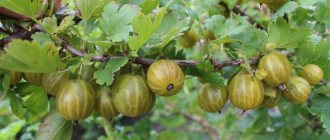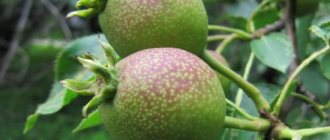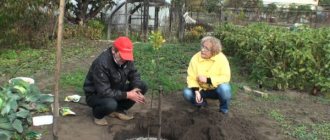Why lemons don't bear fruit at home
The lemon tree brings not only a lot of joy, but also worries to its owner. Planting and grafting citrus is easy, but organizing proper care for it is much more difficult. There are only a few reasons why lemons do not bear fruit exactly on time - unfavorable environmental conditions and diseases that often affect the lemon tree. What to do if your favorite plant does not start to bloom?
To get a good harvest of lemons, you should try hard
What affects fruit set?
Lemon is capable of producing up to fifty fruits per year, depending on the age of the plant and the conditions that the grower was able to provide. The organization of watering, the place where the pot stands, air humidity and the quality of fertilizers determine the growth of the lemon. Inflorescences appear only on a healthy tree, which is pruned and replanted in time. If lemon trees do not begin to bear fruit, then:
- in the room where citrus grows, the air temperature is elevated;
- a small tree has many inflorescences that are not pruned;
- improper watering is carried out (lack of nutrition).
The main reasons for the lack of fruit production in a young tree
The growth of the plant and its fruitfulness depend on environmental factors and the care that a person provides to the citrus. Lemon fruiting is a consequence of good care and care on the part of the grower. The reason for any negative changes should be sought in what kind of water the lemon is watered with and when it is replanted. The quality of soil and fertilizer determines the appearance of the tree.
Vaccinations
Incorrect grafting can be another reason for the lack of inflorescences on the stems. Seed lemons do not bear fruit even under the most favorable conditions. A plant grafted with cuttings bears fruit already from the third year. You should not expect that lemon from the seed will produce a good harvest.
This type of ornamental tree blooms but does not bear fruit. The number of fruits on the tree depends on how the grower coped with the important task of trimming excess inflorescences. The more flowers appear on the stems, the smaller future lemons will be. Nutrients and moisture are distributed evenly throughout the tree, so as soon as the plant blooms, it needs to be pruned.
Grafting must be correct, otherwise the yield will decrease
Temperature and humidity
If the lemon bloomed, but then all the flowers fell off, you need to look for the problem in the temperature and humidity levels in the room. Even a beginner who expects to reap a good harvest in the near future should learn how to make a crop bear fruit or graft it. Lemon blooms but does not bear fruit, what should I do? You need to look for the reasons at home while the plant can still be helped.
Why does an old lemon stop bearing fruit?
Why doesn't the old lemon bear fruit at home? Experienced flower growers convince us that an ornamental tree that has been bearing fruit for several years can suffer from the most trivial problem. If during autumn flowering the temperature in the room where the pot of lemon is placed is too high, the inflorescences will either fall off or not appear at all. Dry air causes the soil in the pot to turn into a hard lump. As a result, the plant lacks moisture even with normal watering. The root system is unable to nourish the inflorescences, and they simply fall off. The optimal temperature in the room should not exceed 20 degrees Celsius.
In winter, experienced gardeners recommend giving the plant a rest. Weak stems or a tree that is sick need to be partially or completely pruned.
Small white inflorescences bring a lot of joy to a person, especially if the lemon blooms for the first time. Under no circumstances should you leave all the flowers that appear. Closer to spring, the lemon is taken out into the open air, where the plant’s own temperature even rises. Lemon comes to life, because spring flowering is characterized by a large number of white buds. In order to avoid reduced fruitfulness of the crop in the future, excess flowers are cut off from the first flowering.
Excess buds should be removed
How to feed a plant during the flowering period
To determine the number of flowers that can be left on a tree, simple calculations are carried out. There should be only one bud for every 10 leaves. If the grower does not trim off the excess buds, the plant will become weak and will soon shed the entire ovary, and not just part of it. Lemon needs to be given more feeding during intensive flowering. In spring, mineral and organic fertilizers alternate. Feeding is carried out every three days.
Lack of nutrition is one of the most common reasons why the ovary does not form on the stems. If the inflorescences managed to emerge, but immediately fell off, the problem should be looked for in the quality and quantity of moisture.
Excessive watering leads to a similar picture - the rhizome cannot absorb water due to swelling of the soil. The root system begins to rot, and the ovary falls off. There is no point in expecting a harvest from a tree that does not receive enough moisture. If the ovary nevertheless survives an unfavorable period, the fruits will be bitter and small in size.
What to do if flowers do not turn into fruits
The absence of fruit on a tree that looks absolutely healthy from the outside can puzzle even an experienced gardener. A bad rootstock may be one of the reasons. The choice of variety determines how much fruit can be harvested after the plant blooms.
In dwarf varieties, fruitfulness is significantly higher than in a full-size crop. If after transplanting the tree does not want to bear fruit, you should wait another year. In most cases, lemons need more time to adapt to new conditions.
Dwarf lemon produces more fruit than regular lemon
If the reason is age
Plants that are not mature enough can bloom only without fruit. This happens if the young culture has not yet matured. Trees from five years old produce a constant harvest, but young lemons do not show such results. Lack of fruit set occurs due to excess fruit or low nutrient concentration. In the cold, the plant feels bad and no vaccinations help it with the ovary.
If the reason is in the place of disembarkation
If the cause of the weakness of the lemon tree has been determined, the problem that has arisen must be eliminated without delay. Simple actions that do not require a person to spend extra money or effort will help to enhance the fruiting of citrus. The first step is to move the pot to the southern part of the building or room in which the lemon grows.
Lemon feels best in the southern part of the room
If the reason is in the soil
During transplantation, experienced gardeners recommend using special well-drained soil. Closer to summer, it is necessary to increase the amount of fertilizer for the root system of the lemon tree. Excessive concentration of nitrogen in the soil due to constant watering and without fertilizer can harm the plant and cause the inflorescences to soon fall off. Caring for ornamental plants is a simple matter, but it also requires complete dedication from a person.
Why lemon does not bloom or bear fruit and what to do
Citrus fruits are grown at home both to produce healthy fruits and for decorative purposes. In addition, during the flowering period they fill the entire room with their aroma, making staying in it like a fairy tale. However, it happens that a planted lemon does not bloom for a long time. What to do and how to get fruit from the plant?
Why doesn't lemon blossom or bear fruit?
There may be several reasons why a lemon tree does not form flowers or bear fruit. You need to thoroughly understand whether mistakes have been made in care, and also whether pests have appeared on the tree.
Incorrect vaccination
If the seedling was grown from a seed, then you should not expect a harvest or flowering from it. A fruiting lemon must be grafted. For these purposes, they mainly use the Meyer and Dioscursia varieties, which are capable of producing crops the following year. The rootstock can be an orange or grapefruit grown from a seed.
Incorrectly selected temperature mode
Lemon does not tolerate temperature fluctuations. If there are sudden changes, the plant may bloom profusely, but then lose color. It is recommended to grow the tree at a temperature of +20 – +24 °C. Heat negatively affects its growth and development, especially indoors.
Insufficient humidity
The lemon tree enjoys a humid indoor climate. Otherwise, buds with flowers will not form at all or will crumble. To humidify the air, use special devices or simply place an open container of water in the room. The plant is also regularly sprayed.
Abundant flowering
There are times when a lemon blooms but does not bear fruit. Experts recommend normalizing the number of flowers, removing unnecessary ones. If there are a lot of them, the tree will lose a lot of strength and there will be no more left to form ovaries. You can determine how many flowers to leave by counting the number of leaves on the plant. For every 10 leaves leave 1 flower.
Lack of vitamins and minerals
During flowering, lemon requires good nutrition with a high content of vitamins and microelements. They come along with feeding.
If you do not fertilize the soil, the tree loses color and does not form ovaries.
Diseases and pests
Lemon, like other indoor plants, can be affected by pathogens and pests. During the flowering period, fungal infections are considered the most dangerous. To prevent their appearance and development, it is necessary to control the level of humidity and regulate watering. Among the pests that attack the plant are:
If a tree is sick, then it will not bloom, much less form an ovary. It is necessary to immediately take measures to destroy pests and pathogenic flora and improve the health of the lemon. Only after this will he be able to please with abundant flowering.
How to make a lemon bloom and bear fruit?
What to do if you want to see your homemade lemon blossom and enjoy its healthy fruits? It is necessary to stimulate flowering, provide proper care, improve the health of the tree and eliminate possible errors in care.
Vaccination and feeding
If the grafting is done correctly, then within 3 years the indoor lemon will be able to please its owners with a harvest. The most commonly used method is eye grafting. The cutting is grafted only if the branch contains a small number of leaves. You can perform this action in a split or behind the bark. The work is carried out during the period when the lemon begins to actively flow sap. As a rule, this happens in April or May.
For the rootstock, strong seedlings with thick branches are used, the bark of which comes away well from the wood. The growth should contain about 5 leaves. To ensure a high-quality operation, use a clean and very sharp knife. Strong alignment is achieved by tightly tying the grafted lemon. If after 3 weeks the petiole of the leaf near the eye turns yellow, then the graft has taken root successfully. Failure in this matter can occur when the bark is poorly separated from the wood.
Cultivating a lemon tree in an enclosed space requires that it be provided with proper nutrition.
The amount of fertilizer must be dosed correctly and applied to the soil. During the flowering period, the plant is fed 2 times a month, and in winter the application of drugs is reduced to 1 time per month. Organic and humic fertilizers are well suited for growing citrus fruits. There are natural supplements that contain a full range of essential microelements. To achieve abundant flowering, they must be applied from February to August.
Causes
There are several main reasons why lemon may not bear fruit at home:
Lemons grown from seed almost never bear fruit, and if this happens, there is very little fruit. For proper grafting, you need to choose high-quality material.
It is best to take the Meyer or Dioscuria varieties. These lemon varieties begin to bear fruit the next year after grafting. You also need to pay attention to the rootstock.
It should be a small tree grown from the seed of some citrus fruit (for example, an orange or grapefruit).
· Incorrect temperature conditions.
If the grafting was successful and the lemon blossomed, but then fell off, the reason must be sought in changes in temperature. The optimal temperature for lemon is no more than +23°C. They do not tolerate heat well, especially in a dry room.
For lemon, it is very important that the air in the apartment is not too dry. Household humidifiers can be used. And the plant itself needs regular spraying and watering.
· Large number of colors.
In order for the lemon to bear fruit, during flowering it is necessary to remove excess flowers. This must be done because they take a lot of energy from the plant.
You need to leave flowers at the rate of 1 flower per 10 leaves.
During flowering, lemon requires mandatory feeding. If you don't do this, it may lose color. Then there will be no fruit.
These were the most common reasons for the lack of fruiting in lemons. In addition, the lack of fruits may be associated with plant diseases.
What to do if the lemon doesn't bloom?
Lemon flowering requires the grower to follow certain growing rules, because the tree enters this vegetative phase only in favorable conditions.
Maintenance errors and other reasons lead to the fact that the crop does not set buds, postponing fruiting indefinitely.
Let's tell you why lemon doesn't bloom at home.
When a lemon is “capricious”: reasons for the lack of flowering
Often, a lemon refuses to bloom due to systematic errors in agricultural technology and the lack of mineral supplements, when the plant simply has nowhere to get the components for laying buds.
In some cases, the cause is pest infestation and the development of diseases.
The lemon tree does not bloom at home due to one or a combination of the following factors:
- Improper watering and lack of replanting;
- Keeping in unsuitable conditions;
- Mineral fasting;
- Damage by insect pests and fungal diseases.
If you keep lemon on the windowsill not only as an ornamental crop, but also for the purpose of producing fruit, it is advisable to create a suitable microclimate for the lemon.
Watering and transplanting: what's wrong with them?
It is very easy to pour lemon at home, but returning everything to normal can be quite difficult, especially if the soil has been waterlogged for a long time.
Although this culture loves moisture, it does not tolerate waterlogging of the substrate. Excessive watering leads to compaction of the soil in the pot, disruption of aeration and nutrition of the entire plant, which does not receive enough substances important for development and, as a result, does not set buds.
Overdrying the soil is also undesirable, since in this case the lemon will hasten to get rid of not only the buds that have formed, but also the fruits that have set in order to compensate for the lack of nutrition.
To ensure proper watering, you need to follow a few simple recommendations:
- Moisten the soil in the pot only as needed, when the substrate has dried to a depth of about 2-3 cm.
- Do not allow the earthen clod to dry out completely, and if such a situation occurs, “solder off” the tree gradually, adding water in small portions.
- Organize a high-quality drainage layer and ensure that there are drainage holes at the bottom of the flowerpot (necessary for draining excess moisture).
Important: for watering lemons, only slightly warm or room temperature water is suitable, standing for several days until sediment forms and the chlorine evaporates. Ignoring this rule negatively affects the health of the crop and slows down its growing season and delays flowering.
Transplantation is another important point that has a direct effect on lemon budding. You should not expect flowering in depleted soil, nor in a cramped pot.
Presence of pests
It goes without saying that the invasion of harmful insects, as well as the presence of viral and fungal diseases, can also negatively affect the flowering and further fruiting of lemons. Moreover, if there are a lot of pests, then the owner, as a rule, notices it. But they can be present in such quantities that the appearance of the tree is not particularly affected, and the inattentive owner believes that everything is in order with the lemon. At the same time, pests (for example, citrus mites) suck the juice from the buds at a stage when they are almost invisible. Of course, such a plant will not bloom!
How to make lemons bloom at home
Homemade lemons are the most spectacular and decorative plants. Delighting everyone with its bright leaves and fragrant flowers, this culture belongs to the capricious type. The slightest disturbance in cultivation leads to a lack of flowering and fruiting. Consistent and competent care contributes to the proper development of the plant. There are several ways you can make a lemon bloom.
Lemon blossom from seed
The technology for growing lemons from seeds begins with the extraction and selection of large seedlings from the fruit. Planting several selected seeds, after pre-treatment with sodium humanate or heteroauxin preparations, is carried out immediately in separate containers.
How lemon blossoms photo
Germinated in greenhouse conditions. When the seedlings reach a height of 7 - 10 cm, a high-quality selection is carried out, which is carried out with transplantation into a large container. The formation of a bush begins with pinching the top.
How to make homemade lemon bear fruit video
Proper care of lemon will bring abundant flowering in 4 - 5 years. Particular attention is paid to uniform illumination of the plant, with periodic rotation. In the autumn-winter period, additional lighting is required. In summer, it is recommended to take the lemon tree out into the fresh air more often.
Citrus grown from seeds is better suited for home use compared to store-bought citrus.
Ways to stimulate lemon blossoms:
Graft
Correctly carried out grafting allows a lemon grown from a seed to bloom earlier and produce fruits 3-4 years after planting.
The eye grafting method is the most popular method. Grafting with a cutting occurs by selecting a branch with a small number of leaves. In this case, two methods are used: “by the bark” and “into the split.” How to graft a lemon video
Grafting is carried out in the phase of active sap flow - April - May. The procedure applies to mature trees with thick trunks and branches. During this period, their bark is freely separated from the wood. There are 5 - 6 young leaves per growth. Using a knife with a sharp blade will allow you to perform the operation quickly and efficiently. Careful tight binding ensures strong alignment. After 3 weeks, a yellow leaf petiole near the eye indicates a successful grafting procedure.
If the bark does not lag well, the graft may not take root.
Top dressing
Feeding is very important for lemon trees. Growing crops in a confined space requires proper dosing when applying fertilizers. During flowering, it is carried out once every 2 weeks. In winter, the amount of fertilizing is reduced to 1 time per month. Lemon responds well to both organic matter and humic fertilizer: Lemon “Mother Earth”, Gumi-Omi Kuznetsova Lemon. Natural preparations have a balanced composition for growing a full-fledged citrus tree.
Regular feeding of citrus produces good flowering in the period February - August.
Crown formation
Proper pruning, starting from the first year of tree life, also contributes to good lemon flowering. Annual pruning of the tops leads to the final formation of a crown with 6 - 8 main branches, in the 3rd - 4th year of development during the flowering period.
Could the age of the crop be the reason for the lack of yield?
An old lemon may not bear fruit for the same reason as a young one - improper maintenance conditions.
A lemon tree lives and actively bears fruit for up to 40-50 years , the main thing is to properly care for it.
A young plant, on the contrary, will not bear fruit for the first few years. A grafted lemon grown from a cutting under the right conditions will produce its first fruits in 3-4 years, but one that has sprouted from a seed may not bear fruit even after 10 years.
Why lemons don’t bloom - a description of the main reasons and ways to solve the problem
Growing a lemon tree is not that difficult. Moreover, this plant grows well both outdoors and indoors.
Lemons are more sensitive to cold than all other citrus trees. Because of this sensitivity, lemon trees should be planted on the south side of the house (if outdoors) or placed under a south-facing window (if indoors). In this article we will look at the situation why your lemon does not bloom. But initially remember: these fruits love light and sun.
While lemon trees can grow in a range of soils, including sandstones, most species prefer well-drained, slightly acidic soil. The plant requires deep watering, at least once a week. Pruning is done as necessary to maintain shape, height and fruit control.
Lemons can be an excellent decoration as a houseplant; they grow well in pots, and at the same time they also bloom and bear fruit. It is enough to organize good drainage and choose the right location. With proper care, a full-fledged fruiting tree can grow up to 2-3 meters indoors, bloom profusely and decorate the interior.
lemon blossom
Lemon trees bloom in a normal temperature range: around 21°C during the day, and 13°C at night. Keep in mind that they usually go dormant when temperatures drop below 13°C. Why doesn't your lemon bloom at such low temperatures? This is the specificity of the plant: it originally comes from a country with a warmer climate. For normal flowering, the tree requires a lot of light. Therefore, it may need additional fluorescent lights if grown indoors.
Lemon trees can also be placed outdoors during warm periods, which is also recommended to increase the number of fruits. When you grow your lemon tree indoors, bees and other insects will not be able to pollinate it. Therefore, you should place them outdoors periodically during the summer.
Why does a lemon not bloom under normal home conditions if it is transplanted? The reason here is clearly not the transplant. We'll talk more about the reasons for the lack of flowers a little later in this article. Lemon trees are excellent at propagating from cuttings and seeds.
But nevertheless, if you want tasty and juicy fruits, follow the standard measures for planting/transplanting a plant: the seeds must be well dried for 1-2 weeks. Plant to a depth of no more than 5-10 cm in good, fertilized soil. Cover the soil with a plastic lid or clear bag. This will speed up growth. Place the pot in a sunny location and wait until the seedling is 10-15cm tall before transplanting it outdoors or into another pot.
Problems with lemon blossoms
If the lemon does not bloom, then what to do in this case? For example, you bought a lemon tree to use the fruits for tea drinking, or you simply dreamed of a small fruit-bearing tree in your apartment for interior decoration. But a long time passes, and there are still no flowers.
When your lemon tree refuses to bloom when it should and instead just grows like a normal houseplant, it's worth looking for the problem of this behavior. There are not many reasons why a lemon tree does not bloom. Let's take a closer look at the most basic ones.
Why doesn't lemon bloom?
As with all fruit plants, there is usually a specific reason why a lemon tree will not bloom. It can be as minor as the location of the plant or as serious as fertilization or excessive pruning.
Here are the most common reasons and some of their solutions to ensure full flowering of the lemon tree:
- Plant age. Many varieties of fruit trees must go through a certain period of growth before they begin to bloom and bear fruit. This means that in many cases, obtaining lemon blossoms only requires time and patience. You will have to look after and nurture them until they are three or four years old.
- Incorrect watering. Lemon does not bloom, what to do next? The solution to the problem with the lack of flowers on the lemon tree largely depends on water (or rather, its quantity). When watering, moisture should not accumulate in the soil, but should evenly saturate it. Well-drained soil and uniform watering are the keys to successful flowering.
- Fertilizers. Many plants, including lemons, spend a lot of energy constantly growing new leaves and flowers at certain periods. The most common complementary foods are fertilizers containing nitrogen. But its excessive amount can also cause a lack of color on the plant. If you feed your lemon frequently, stop feeding it for about a month and see if flowers appear. If after this the ovary starts to set, then you have clearly gone too far with nitrogen, switch temporarily to phosphorus or bone meal.
Reference! There are only a few varieties of lemons that need to be watered after the soil has completely dried. All others require systematic irrigation in small quantities. Never leave an indoor lemon plant in a saucer with excess water after watering. Remove excess moisture after all the water has drained into the bottom of the pot.
Reference! If the lemon is growing outside, remove any nearby overhanging branches or other obstructions that would prevent the lemon from receiving enough sun. If it is not too large, you may need to replant it in a sunnier location.
- Temperature conditions. Why doesn't my lemon bloom at home? You will be surprised, but the reason may be temperature, and it is not the heat. Indoor lemons are notorious for not blooming because they don't get enough "chill" hours. For lemons, the cooling temperature is about 16 °C. Place the lemon in these conditions for several hours a day in winter and spring to simulate the cooler nighttime temperatures that outdoor trees experienced in their native climate.











